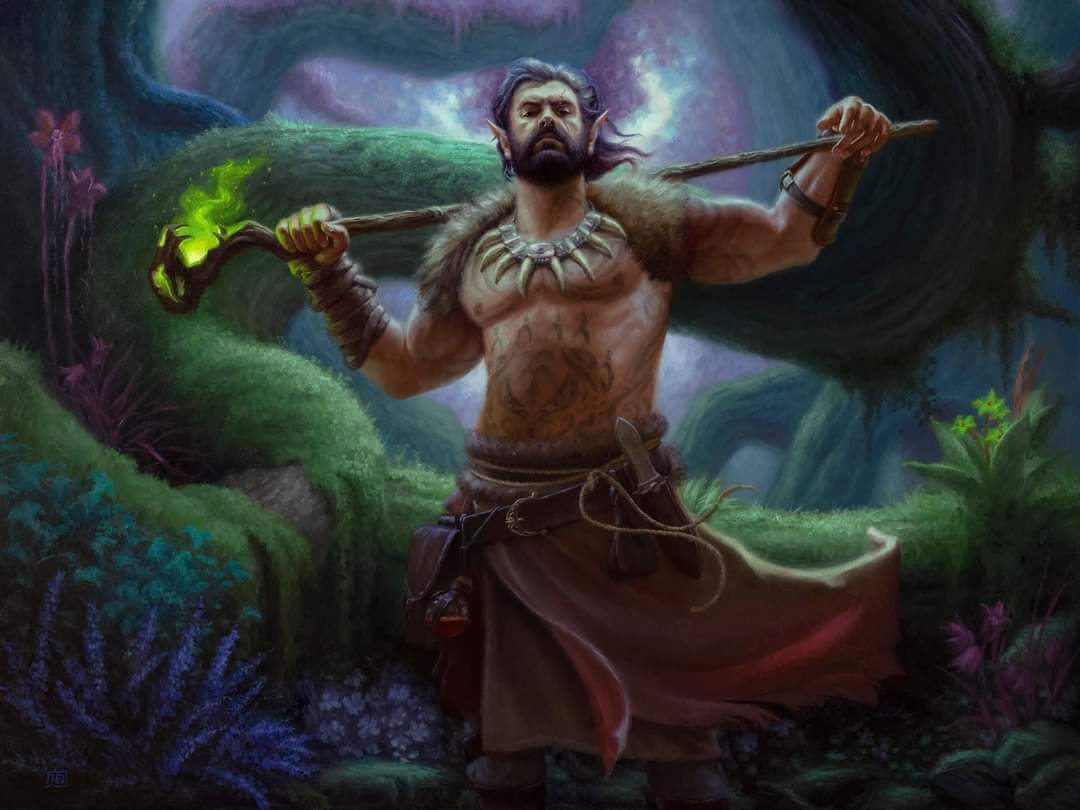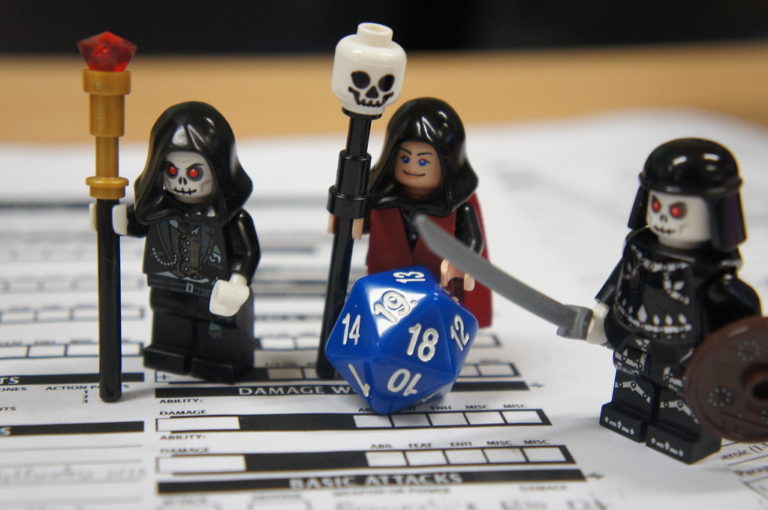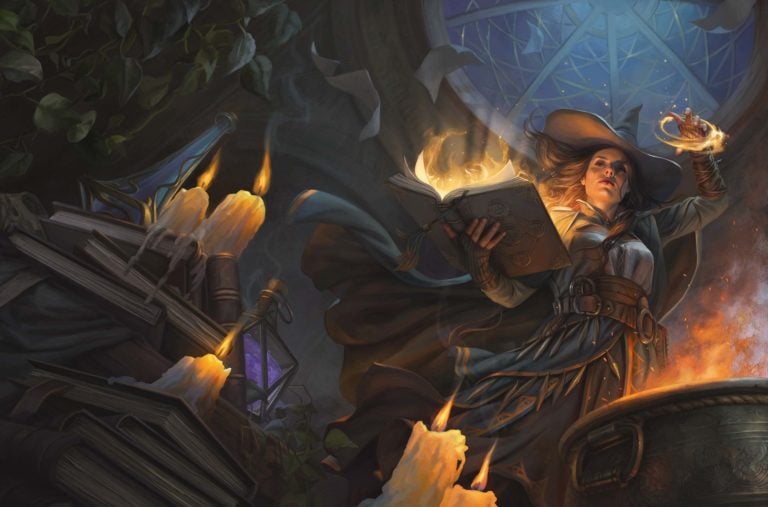Shillelagh 5E Cantrip Guide | Attributes, Pros, Cons, and Uses
Welcome to the Shillelagh 5E cantrip breakdown! As a druid, you should be accustomed to a high level of versatility. You can cast spells, you can turn into animals, and you have plenty of other options that allow for customization. Even your spells give you some flexibility. Shillelagh is one of those spells, as it gives you the chance to power up an otherwise uninteresting club. So let’s get our spellcasting cap on and get on with this Shillelagh guide.

Table of Contents
Shillelagh 5E Attributes

School: Transmutation
Class: Druid
Range: Touch
Components: V S M (mistletoe, a shamrock leaf, and a club or quarterstaff)
Casting Time: 1 Bonus Action
Duration: 1 Minute
Spell Description
The wood of a club or quarterstaff you are holding is imbued with nature’s power. For the duration, you can use your spellcasting ability instead of Strength for the attack and damage rolls of melee attacks using that weapon, and the weapon’s damage die becomes a d8. The weapon also becomes magical, if it isn’t already. The spell ends if you cast it again or if you let go of the weapon.
Shillelagh Spell Breakdown
Instead of using the normal ability modifier when you make an attack or deal damage with the enchanted club or quarterstaff, you will use your spellcasting modifier to perform that task.
To give you an example of what typical combat will look like, this is how damage is normally resolved if you were to use a simple Quarterstaff:
To succeed in an attack roll:
1d20 + Strength Modifier + Your Weapon Proficiency Bonus
To deal damage after a successful hit:
1d8 + Strength Modifier
Because you want the strongest stat to be Wisdom, you will need to make a sacrifice somewhere in the stat chart in order to remain proficient with your spellcasting. Taking Shillelagh will help make that decision a little easier.
An important bonus of using shillelagh is that the damage you deal is considered magical. That means you apply full damage to creatures that would otherwise be resistant to bludgeoning damage.
See Also: The Complete Guide to 5E Ritual Spells
Is Shillelagh Good in 5E?
The best Pro to using Shillelagh is the fact that you can practically ignore Strength for the entirety of the campaign. I am not saying you will not need Strength for something; especially if you do not have a melee-based character in your party. But when it comes to combat, you will be able to use your strongest stat instead of an inferior modifier. For a Druid, that superior stat should be Wisdom.
You can also cast Shillelagh as a bonus action, so you do not have to stop what you are doing in order to cast it. You could be deep in an intense battle and instantly cast Shillelagh so you can deal those extra points of damage. Who knows, those couple of points could be the difference between your team getting a well-deserved rest or dying.
Shillelagh will also make your strikes magical, making this a good option for lower-level characters facing enemies that are resistant or immune to non-magical damage.
There is also little cost for using shillelagh. It is a cantrip that you can cast as a bonus action, meaning you won’t have to give up an attack to activate it. It lasts a minute, but it can be re-cast with a bonus action any time. It is also not a concentration spell, which is helpful for saving your some bonus actions in re-casting it should you take damage.
Downsides for Using Shillelagh
The primary downside for shillelagh is that it does not scale well at higher levels. Of course, this is generally true of any basic weapon. But unlike other damage cantrips that add dice at certain levels, Shillelagh never powers up. At higher levels, most characters will eventually have better damage options than this.
See Also: Starting Gold 5E Guide
When Should You Use Shillelagh
Ideally, you will want to use Shillelagh the second before you take a swing with your very recently enchanted weapon. As the spell will last for ten rounds of combat, you will want to make sure you get in as many strikes as you can possibly swing. You could also use Shillelagh if you need to strike something hammer or strike an inanimate object harder. Basically, anything that requires you to swing your Club or Quarterstaff with great force in a direction away from you and your allies.
Shillelagh is best used by lower-level characters. Without bonuses to damage as you level, the damage you deal with shillelagh will eventually be overshadowed by more powerful options.
When Better Options Are Available
The best option is to use another character to take the swing for you. The fewer components you use, the more likely you will have them in case of an emergency. If you have a melee-based character in your party, it is best to let them take care of the minor strength issues instead of spending components to do that. Shillelagh is a top-notch Druid cantrip, although it will eventually become underpowered compared to other attack options as you level.
What Does the Shillelagh Spell Look Like?
As written, the spell description for Shillelagh does not provide any guidance on what it looks like when cast. That means it is up to your imagination. In my games, I take the description that the club or quarterstaff is imbued with nature’s power to heart.
One possible visual description of the shillelagh spell is that it simply glows with green energy. If you want something less arcane, you could instead visualize thick roots or vines wrapping around the weapon.
Shillelagh vs. Primal Savagery
A popular debate among druid players is whether shillelagh or Primal Savagery represents the best cantrip option for druids in 5E. Like all good questions, the answer is “it depends.”
Primal Savagery is a similar spell in that it enhances a melee attack as a cantrip. You can use your action to make an attack that deals acid damage from your fingernails or teeth. The important difference is that while shillelagh does more damage early on, Primal Savagery scales better.
Shillelagh never scales damage. However, primal savagery goes from 1d10 damage to 2d10 damage at 5th level. You can deal a maximum of 4d10 damage when you hit level 17. Thanks to the addition of your wisdom and proficiency bonus on attack rolls, shillelagh is the stronger option until level five. After that, Primal Savagery is far superior.
Shillelagh 5E FAQ
Get all of your Shillelagh questions answered here.
Can You Cast Shillelagh on a Torch?
No, you can’t cast shillelagh on a torch. While it makes sense thematically, the spell description is very clear. One of the material components for this spell is either a club or a quarterstaff. The material component you choose is also the weapon the spell applies to.
What Classes Can Use Shillelagh?
Druid is the only class that has shillelagh on its spell list. In fact, it is one of the best druid cantrips available. Outside of druids, bards have the ability to take this cantrip at level 10 with their Magical Secrets feature.
Do You Add Proficiency to Shillelagh?
Shillelagh only alters the ability you use when making that attack. That means if you are proficient with the club or quarterstaff you are using for the spell, you will add your proficiency bonus to the attack roll.
Can I Attack with a Shillelagh as a Bonus Action?
Casting the Shillelagh spell uses a bonus action, but that does not mean you can make an attack at the same time. The spell only modifies the ability you use when making the attack. That means you must
Is Shillelagh Magic Damage?
When you cast shillelagh on a club or quarterstaff, the damage you deal with it is magical. That means you can deal full damage to creatures that resist bludgeoning damage from non-magical weapons.
Can You Cast Shillelagh on a Magic Weapon?
You can cast shillelagh on a magic weapon. the language of the spell makes this clear, as it says “the weapon becomes magical, if it isn’t already.” The only limitation is that the weapon must be either a quarterstaff or club made from wood. When using the spell this way, you would calculate attack and damage rolls using your spellcasting ability instead of strength, but the other bonuses from the magical weapon would still apply.
Does Shillelagh Work with Polearm Master?
You only get the D4 damage specified in the polearm master feat when using a bonus attack with your shillelagh. One of the common questions about this spell is how shillelagh and polearm master interacts. Polearm master gives you the ability to make an attack as a bonus action using the blunt end of a polearm, like a quarterstaff. Many players have wondered if you would get the full damage of a shillelagh attack as opposed to the D4 mentioned in polearm master, since the weapon is essentially magical. Jeremy Crawford took to Twitter to set the record straight.
Concluding our Shillelagh Guide
That’s it for our rundown of the shillelagh spell in D&D. I like this spell more than most, especially for low-level druids. While you might have better options available to you in many cases, it is always nice to be able to deal some damage without expending spell slots or wild shape. I particularly like this option for druid characters that are built solely on wisdom.






